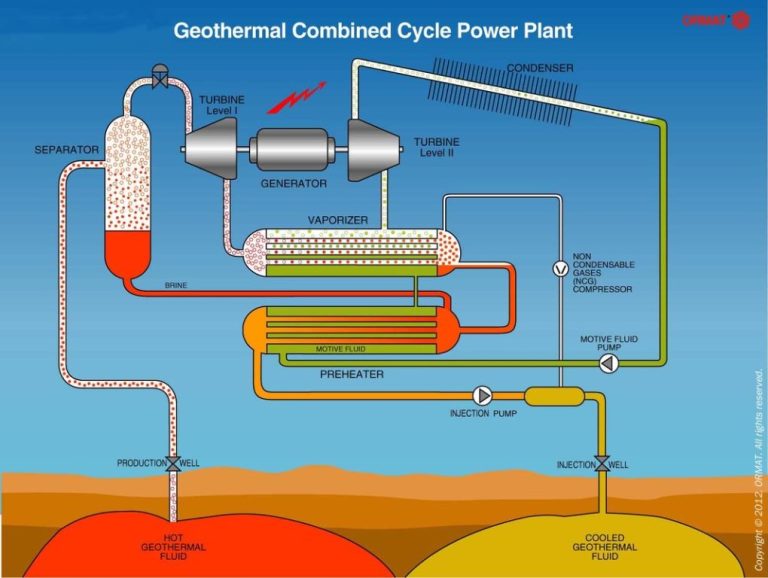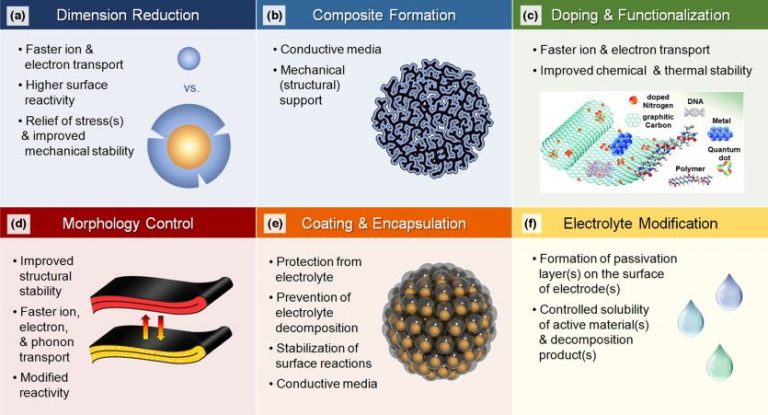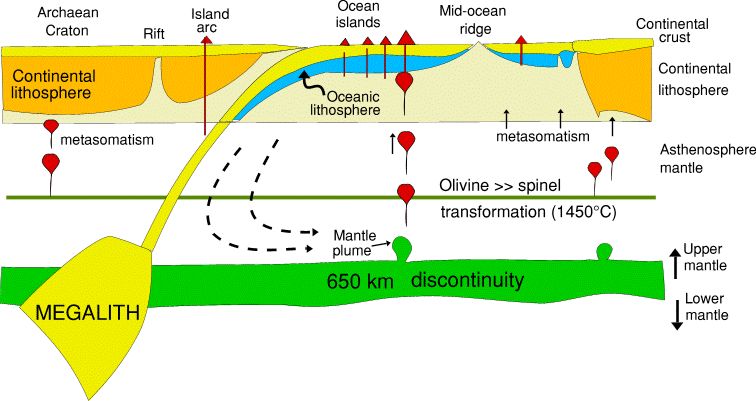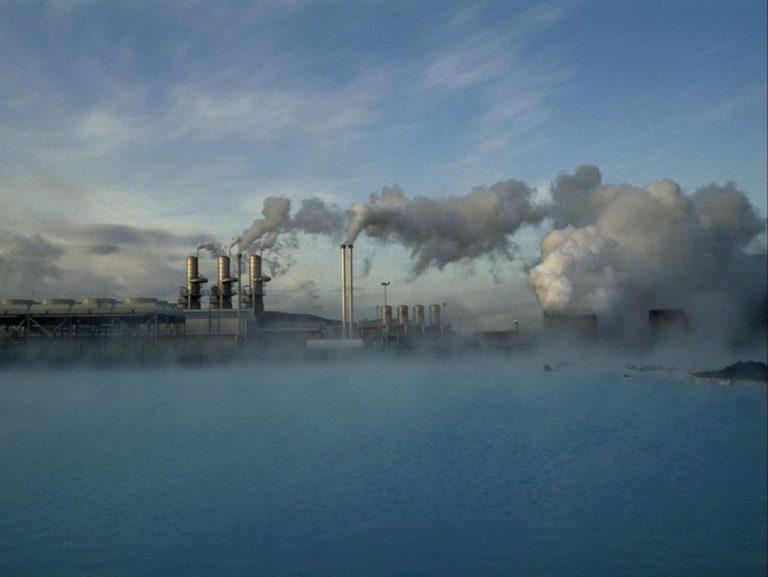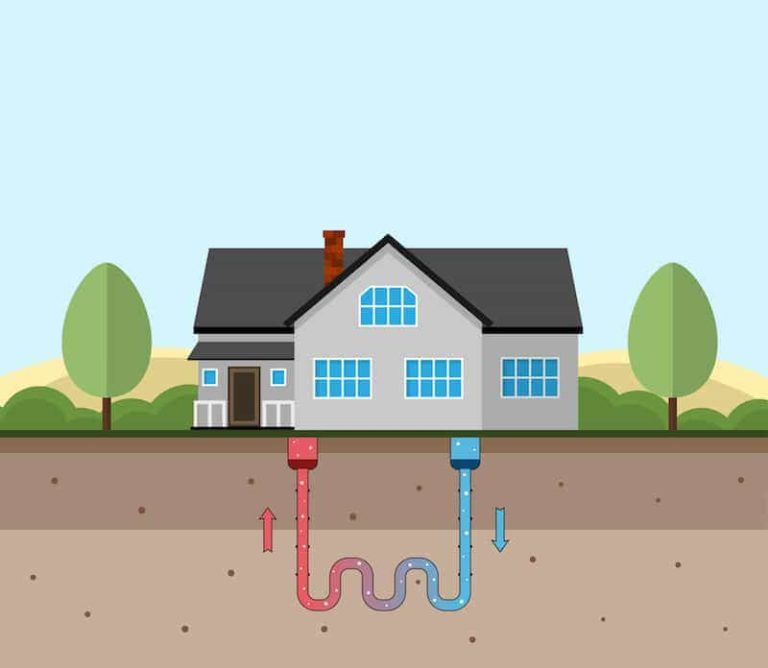Geothermal Energy Sustainability: Lessons Learned And Future Directions
Geothermal energy is a renewable energy source that utilizes heat energy generated and stored within the Earth. The term “geo” means Earth, while “thermal” means heat. Simply put, geothermal energy is the heat energy from the Earth. It is considered a clean, sustainable energy source because it does not require the burning of fossil fuels. Geothermal energy production relies on tapping into pockets of naturally occurring steam or hot water reservoirs that exist a few miles or more under the Earth’s surface to generate electricity and provide heating.
Geothermal energy comes from the leftover heat from when the Earth was first formed around 4.5 billion years ago, as well as from the radioactive decay of minerals. This heat emanates outwards from the Earth’s core, transferring between particles in the Earth’s mantle and crust. The Earth’s internal thermal energy flows to the surface at a rate of 44 terawatts and replenishes itself constantly. This makes geothermal energy an abundant renewable resource.
Geothermal energy is considered a clean energy source because it does not generate greenhouse gas emissions or toxic byproducts directly. It requires no fuel for energy production and thus does not contribute to atmospheric pollution the way burning fossil fuels does. When implemented properly, geothermal energy production is also sustainable and does not deplete the Earth’s heat resources. The utilization of geothermal reservoirs allows for a reliable energy supply that is immune to changing weather conditions and does not contribute to climate change.
History and Current Use of Geothermal Energy
Geothermal energy refers to the heat contained within the Earth that can be recovered and utilized for heat and electricity generation. The earliest applications of geothermal energy date back over 10,000 years to when ancient peoples used hot springs for bathing, cooking, and heating. By the late 19th and early 20th centuries, the first geothermal power plants were built in Italy, producing electricity through dry steam technology that harnessed natural steam from the Earth’s crust. Geothermal developments continued gradually around the world throughout the 1900s as technology advanced to tap hot water reservoirs deeper underground through drilled wells.
Today, geothermal energy provides a clean, renewable source of baseload electricity generation in over 20 countries. The installed global geothermal power capacity in 2019 was estimated at around 14.5 gigawatts (GW), meeting approximately 0.3% of worldwide electricity demand. In addition to electricity production, geothermal resources are used extensively for direct heating applications, like district heating systems, greenhouse heating, aquaculture, and industrial purposes. The direct use of geothermal heat more than doubles geothermal’s overall global energy contribution. Leading countries for geothermal power production include the United States, Indonesia, Philippines, and Kenya.
Geothermal Energy Production Methods
There are three main methods used to extract and convert geothermal energy into electricity:
Dry Steam
This method utilizes hydrothermal resources where geothermal steam is directed out of the ground to turn turbine generators. The steam goes directly through the turbine, then is cooled and condensed back to liquid water in a cooling tower. This is the simplest and oldest method for producing geothermal power.
Flash Steam
With the flash steam method, deep wells are drilled into a geothermal reservoir to tap hot water under high pressure. The hot water is pumped up to a reduced pressure environment, causing some of the water to rapidly vaporize or “flash.” The steam then drives a turbine to generate electricity. Leftover water and condensed steam are pumped back into the reservoir.
Binary Cycle
Binary cycle power plants operate on water at lower temperatures than flash steam plants. The hot geothermal water is passed through a heat exchanger, which transfers heat to a separate closed pipe system where lower boiling point fluid, usually an organic compound like isobutane, is vaporized. The vapor expands through a turbine, which powers a generator. The vapor is then condensed back to fluid and reused repeatedly.
Environmental Benefits of Geothermal
Geothermal energy offers significant environmental benefits compared to conventional fossil fuel power plants. Since geothermal plants do not burn fuel to generate electricity, they produce very low emissions and none of the air pollution associated with burning coal, natural gas or oil. The geothermal steam and hot water used to produce electricity come directly from the earth, so there is no combustion and very little air pollution. According to the U.S. Environmental Protection Agency, geothermal plants emit on average 97% less acid rain-causing sulfur compounds, 98% less smog-causing nitrogen oxides, and 99% less carbon dioxide than comparably-sized conventional fossil fuel power plants.
Geothermal plants also have a very small land footprint compared to other power stations. They require no fuel transport or storage facilities, and power plants can be built directly on top of the geothermal resource. Typically less than 1 square mile of land is needed for a geothermal plant versus hundreds or thousands of acres for solar, wind or coal plants of equivalent capacity. The small land footprint makes geothermal an environmentally sustainable way to generate renewable power.
Overall, geothermal energy is regarded as one of the cleanest, greenest and most sustainable energy sources available today. With near zero emissions and minimal land usage, geothermal can provide reliable base load electricity generation with virtually no negative environmental impact if developed properly and responsibly.
Economic Viability and Costs
Geothermal energy projects require significant upfront capital costs for resource exploration, test drilling, permitting, and construction of power plants and infrastructure. However, once constructed, geothermal plants have relatively low operational costs compared to fossil fuel plants.
The levelized cost of electricity (LCOE) from geothermal power in the U.S. ranges from $0.04 – $0.14 per kWh, depending on the quality of the resource and type of project. Flash steam plants, which utilize high-temperature hydrothermal resources, have the lowest LCOE at around $0.04 per kWh. Binary cycle plants, which can utilize lower-temperature resources, have higher capital costs and LCOEs around $0.06 – $0.10 per kWh.
Enhanced geothermal systems (EGS), which create artificial geothermal reservoirs, can have LCOEs above $0.10 per kWh due to the high upfront costs of reservoir creation. However, EGS has the potential for major cost reductions as the technology matures.
Overall, geothermal power is cost-competitive with new fossil fuel plants and on par with other renewable sources like wind and solar power. The high upfront capital costs remain a key barrier, but declining drilling costs and technological improvements should improve geothermal economics going forward.
Key Locations for Geothermal Production
Certain regions around the world have characteristics that make them well-suited for geothermal energy production. The primary countries and regions utilizing geothermal are:
United States
The western United States, especially California and Nevada, has strong geothermal resources due to its location along tectonic plate boundaries. Major geothermal electric plants are located in The Geysers in California, which is the largest complex of geothermal power plants in the world.
Indonesia
As an island nation located along the “Ring of Fire” zone of active volcanoes in the Pacific Ocean, Indonesia has abundant geothermal resources for energy production. Major sites include the Wayang Windu Geothermal Power Station on Java island.
The Philippines
The Philippines has high geothermal power potential due to its location near tectonic plate boundaries in Southeast Asia. Major geothermal plants are located in Leyte and Mindanao.
Iceland
Iceland is located over an active volcanic hot spot and produces almost all of its electricity from geothermal and hydropower plants. Major geothermal regions include the Reykjanes peninsula near the capital Reykjavik.
New Zealand
New Zealand’s North Island volcanic region is home to significant geothermal resources, most notably the Wairakei power station near Taupo which is one of the oldest and largest geothermal stations in the world.
Italy
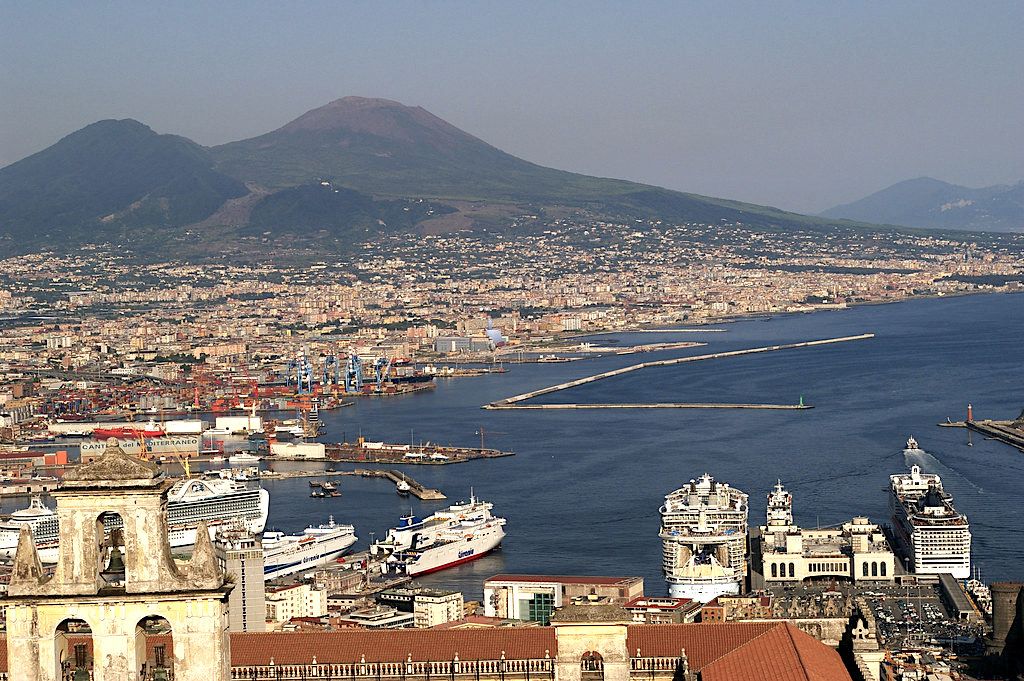
Italy has historically used geothermal energy due to volcanic regions like Tuscany. Larderello in Tuscany is where the world’s first geothermal power plant opened in 1904.
Japan
Japan has over 20 geothermal plants generating electricity, mostly located in the Tohoku and Kyushu regions. Major sites include the Onuma Geothermal Plant in Hokkaido.
Future Outlook and Growth Potential
The future looks bright for continued growth in geothermal energy production and capacity. According to projections from the International Energy Agency, global geothermal capacity could increase by 43% between 2020 and 2025 under their stated policies scenario. With concerted efforts, geothermal capacity could grow even faster and provide up to 5% of global electricity generation by 2030.
Several factors point towards a favorable outlook for geothermal. First, the technology used for geothermal energy extraction is constantly improving. Enhanced geothermal systems (EGS) allow for geothermal production in areas previously thought unviable. Floating rig technologies are unlocking offshore geothermal potential. Additionally, binary cycle power plants are increasing the efficiency of production from lower temperature reservoirs.
Second, geothermal resources are vast but underutilized globally. The United States, East Africa, Southeast Asia, and parts of South America hold tremendous untapped potential. With support for exploration and site development, geothermal could see rapid capacity expansion.
Lastly, geothermal offers a reliable, renewable baseload power source that complements the variability of wind and solar generation. Its ability to provide stable and consistent output regardless of weather or time of day makes it an essential part of plans to limit fossil fuel dependence. With the growth of renewable portfolios, geothermal’s storage and grid balancing strengths will be in increasing demand.
Challenges and Limitations
While geothermal energy has many benefits, there are some key challenges and limitations to be aware of:
Intermittency
Geothermal plants can experience intermittent power generation as geothermal reservoirs deplete over time. This can lead to an unstable power supply. Advanced technologies like enhanced geothermal systems aim to address this.
Suitable Locations
Geothermal energy requires specific geological conditions like underground reservoirs, hot springs or geysers. This limits suitable locations, typically to tectonically active areas.
Upfront Costs
Exploring and developing geothermal energy sites requires significant upfront investments. Drilling wells thousands of feet deep is expensive. While costs are recovered over time, high capital costs can deter adoption.
Policy and Regulatory Factors
Government policies and regulations significantly impact the development and adoption of geothermal energy. Key factors include:
Subsidies and Incentives
Tax credits, grants and other financial incentives can help offset the high upfront costs of geothermal development and make projects economically viable. The federal government has provided production and investment tax credits for geothermal in the past. Some state and local governments also offer incentives. However, inconsistent subsidy programs have hampered growth.
Permitting
Obtaining permits for geothermal projects can be time-consuming and complex due to regulatory requirements related to land use, water use, endangered species and more. Streamlining permitting and regulations could accelerate geothermal development.
Additionally, access to land with geothermal resources can be a barrier. Policies related to leasing federal lands and rights-of-way could enable increased geothermal production.
Overall, sound policies and regulatory frameworks will be key to unlocking the full potential of geothermal energy.
Conclusions
Geothermal energy presents a promising renewable energy source that offers reliability, cost-effectiveness, and environmental benefits compared to fossil fuels. This overview has explored the current state of geothermal energy use globally, the methods of harnessing geothermal resources, the economic and sustainability factors, and the future outlook.
Key points to highlight:
- Geothermal resources provide constant baseload power immune to weather fluctuations, unlike solar and wind.
- Costs are declining as drilling and exploration technologies improve.
- Geothermal has low lifecycle carbon emissions compared to coal and natural gas.
- However, subsurface fluid injection can trigger seismic events and some locations have finite heat resources.
- Enhanced geothermal systems unlock more potential by fracturing hot dry rock formations.
- Policy support and research funding will enable continued growth worldwide.
In summary, geothermal energy can sustainably meet a significant portion of the world’s electricity demand if resources are harnessed responsibly. With technological improvements and supportive policies, the geothermal industry can expand dramatically. The future is bright for geothermal power to provide clean, renewable baseload energy globally while minimizing environmental impacts.

